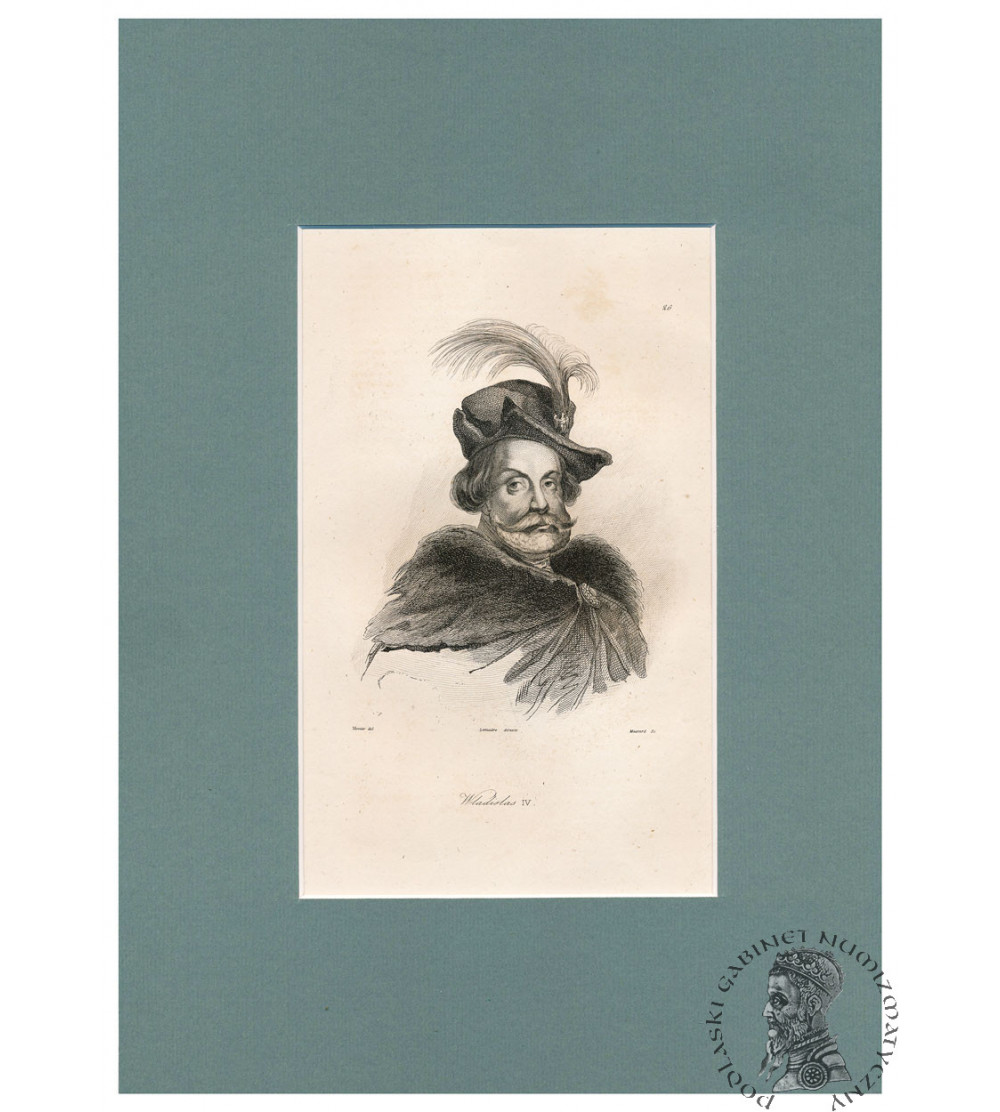




Ladislaus IV Vasa, King of Poland, portrait, steel engraving 19th century, Engraving from the work "L'Univers Pittoresque - La Pologne" by Ch. Foster, Paris 1840, all A4 format (passe-partout), dimensions of the picture 11 cm x 18 cm, good condition, small spots in places.
Ladislaus IV Vasa (1595-1648) - electoral king of Poland from 1632-1648, of the Vasa dynasty. He was the eldest son of Sigismund III Vasa and Anna of Austria. He was born on June 9, 1595 in Łobzów near Kraków. Already in his youth he was used in political games. After the Polish army occupied Moscow in 1610, the boyars appointed him tsar on the condition that he change his religion to Orthodoxy. In the face of his father's resistance, this condition was rejected, and the project to install a Polish royal on the Moscow throne collapsed. Two expeditions organized to obtain the Moscow crown - in 1612 and 1617-1618 - ended in failure. In 1621, Wladislaw led a Polish army to Chocim, although knocked down by illness he did not take part in the fighting. He enjoyed great popularity among his subjects. In 1632, after the death of his father, he was elected as the new king in the course of one of the most peaceful and consensual elections in the country's history. The first challenge that awaited the new monarch was the war with Moscow. The Russians attacked Smolensk in 1632, but the relief organized by Wladislaw forced them to capitulate. In May 1634, the Republic signed a favorable peace in Polanov, but the king had to relinquish his claim to the tsarist crown. While the Smolensk War was still in progress, the Poles also repulsed a Turkish-Tartar invasion. In turn, in 1635, the king, forced by the Polish mighty (he himself pushed for war, hoping to regain the Swedish throne), concluded a 26-year truce with Sweden in Sztumska Ves. Relations with the Cossacks were less favorable during Wladislaw's reign. In 1635-1638 there were several uprisings, brutally suppressed by Crown and magnate troops. After ten years of relative peace, in 1648, the Khmelnytsky uprising broke out. The king did not live to see its end - he died on May 20, 1648, a few days after the defeat of the Republic at Yellow Waters.
He was the founder of the Polish navy and a committed patron of the arts. In 1637 he married the Austrian Archduchess Cecilia Renata Habsburg, and after her death, the French aristocrat Louise Marie Gonzaga. With his first wife he had a son and a daughter, who, however, did not live to adulthood. It was he who, in honor of his father, erected Sigismund's column on the castle square in Warsaw. Source: ciekawostkihistoryczne.pl